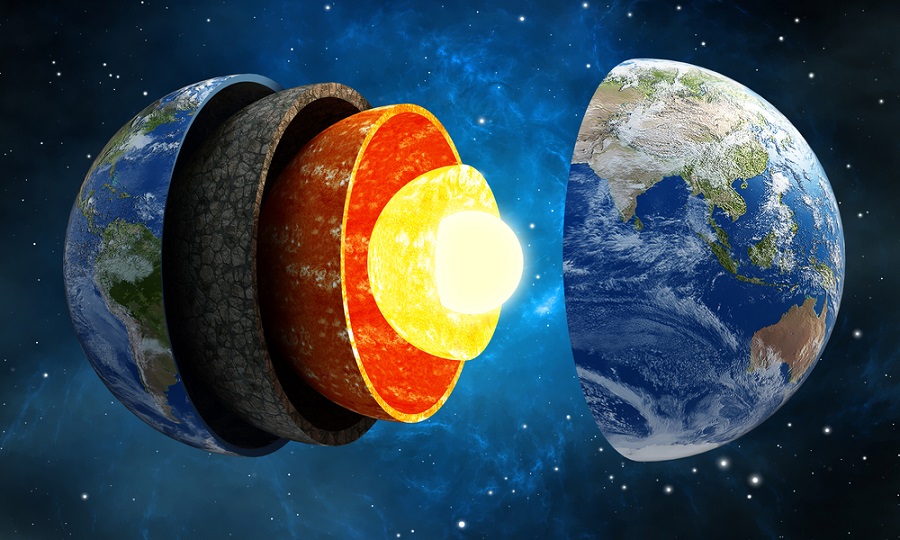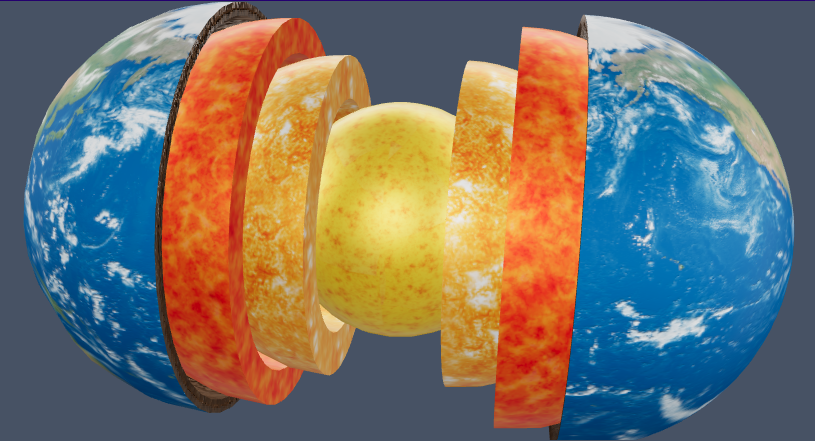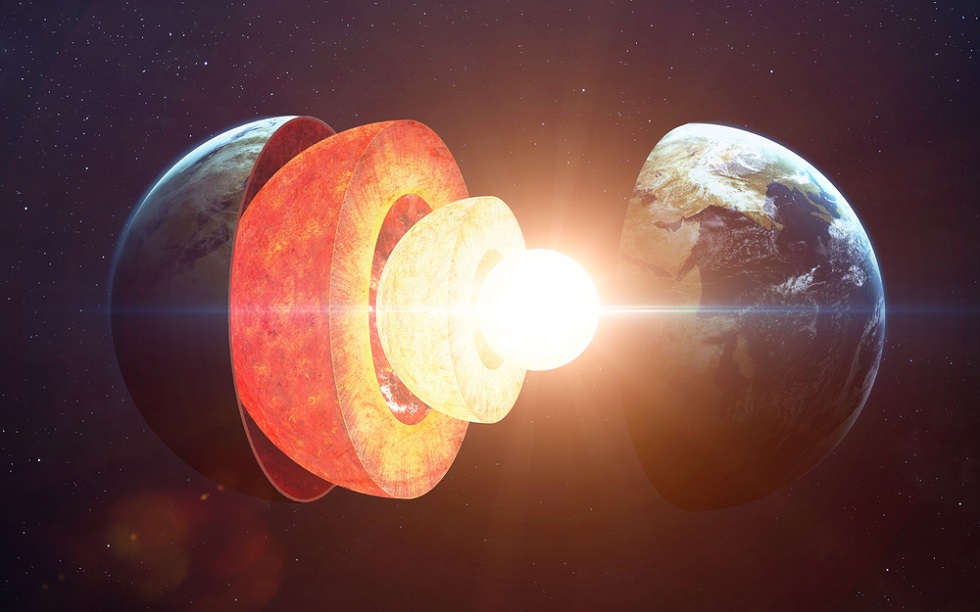
Layers of the Earth – Earth's Structure with Diagram and 3D Model

The Earth is a fantastic place, and humans have been studying it since its creation. For centuries, scientists have been trying to find out more about the world around them.
There is more to the Earth's structure than we can see on the surface. If you could hold the Earth in your hand and slice it in half, you'd know that it has multiple layers.
But of course, the interior of our world continues to hold some mysteries for us. Even as we explore other worlds and deploy satellites into orbit, our planet's inner recesses remain unknown. Scientists have been researching and learning a lot about the different layers of the Earth and how they were formed.
The Earth has a complex structure: a solid inner core surrounded by a liquid outer core surrounded by a solid mantle and a thin crust. The Earth's crust comprises many tectonic plates and is susceptible to earthquakes, volcanic eruptions, and other tectonic activity.
This blog will explore the different layers and structures of the Earth.
Structure of the Earth
The Earth is composed of distinct layers: the crust, the mantle, the outer core, and the inner core. Each one has a different chemical composition and physical state and can influence life on Earth's surface.
The mantle's movement, caused by heat fluctuations from the core, can result in the shifting of plates. This, in turn, can lead to earthquakes and volcanic eruptions. These natural disasters then change our landscape and – in some cases – pose a threat to human life and property.
Expand your understanding of how the Earth was built in a 3D virtual classroom with Edverse.
Layers of the earth diagram

Layers of the Earth
The Earth has three main layers: the crust, the mantle and the core. The three layers of the Earth are
The Crust
The crust is the outermost layer of the Earth, is around 5-70 km thick, and is made of rocky material. The crust is thicker below the continents than the ocean floor. The crust is segmented as the continental crust and oceanic crust.
The major elements of crust SIAL are Silica (Si) and Aluminium (Al) and SIMA (Si - Silica and MA - Magnesium).
The Mantle
The mantle is the layer of the Earth beneath the crust, and is made up of hot, molten rock. It is composed of two layers: the upper mantle, which is about 200 km thick, and the lower mantle, which is about 2900 km thick.
The rocks are solid in the upper mantle, whereas in the lower part of the mantle, rocks are in molten form. This molten rock inside the Earth is called magma.
The mantle is divided into three main zones-
- Lithosphere
- Asthenosphere
- Mesosphere
The Core

The core is the hottest and innermost layer of the Earth, made up of iron and other metals. The core is divided into a solid inner core and a liquid outer core. The outer core is around 2200 km thick, and the inner core is 1,230 to 1,530 km thick. All three layers of the Earth are easily distinguishable in layers of the Earth 3D model.
It is composed mainly of Nickel (Ni) and Iron (Fe). Hence it is called NIFE. The large quantities of iron in the Earth's core are responsible for the planet's gravitational force. As the Earth rotates on its axis, the liquid outer core spins over the solid inner core, generating the Earth's magnetic field.
This is what makes the magnetic compass function as it does. However, the materials cannot move and remain solid due to the high pressure in the inner core.
Conclusion:
Understanding the Earth's structure and the three layers of the earth 3D model is an excellent first step for students. It enables a better understanding of our planet and the rocks and minerals that make up the world around us. It will help students wishing to pursue geology.
Frequently Asked Questions
Which mineral is most commonly found in the mantle?
The most common mineral in the mantle is olivine. When the mineral is of gem quality it is called peridot.
Can students understand the layers of the earth in 3D?
Yes, a 3D rendition of the earth can be simulated via Virtual Reality technology in the metaverse. Students will enjoy the fun filled lesson as they interact with the Earth, its crust, magma, and volcanoes!!
Why the Metaverse to understand Layers if the Earth through Layers of the Earth 3D Model?
The metaverse is an exciting technology with vast potential to revolutionize the education sector. The metaverse can be used for teaching and educating kids from K-12 to higher education to corporate training and upskilling.